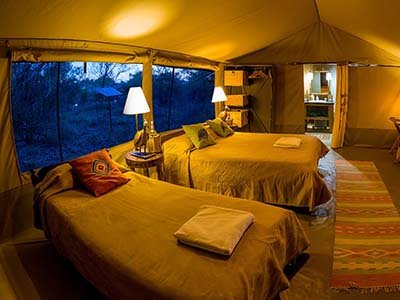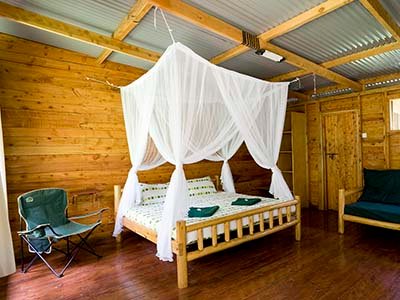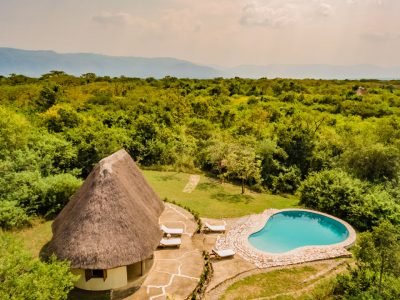Semuliki National Park
The Semuliki Forest Reserve was created in 1932, and in 1993 it was designated as a national park. This 220km2 park is situated at the foot of the Albertine Rift Valley, which is just 670–760m above sea level. There is a 700 m descent from Fort Portal town to Semuliki through one of Uganda’s most picturesque routes. The Democratic Republic of the Congo’s Ituri Forest’s easternmost point, Semuliki, is home to numerous Congo-Guinean species that are at the easternmost point of their ranges. Semuliki is the only tract of true lowland tropical forest in East Africa. Professional naturalists should visit Semuliki because of the park’s 441 recorded bird species, including 35 that are only found in East Africa, 15 primates, 300 butterfly, and 235 moth species, as well as its 441 reported butterfly species.
The 160 km long Semliki Valley is a portion of the Albertine Rift Valley that stretches between the lakes Edward and Albert and is located on the isolated western side of the Rwenzori Mountains.
This modest park has two major attractions: the two hotsprings and their marshy surrounds, as well as albertine rift endemic birds. We had a three-hour stroll through the forest, viewing rare birds such and small mammals including African pygmy squirrel and an elephant shrew and learning about other flora and trees along the way. Tripadvisor
The wildlife of the valley, which Uganda and the Democratic Republic of the Congo share, originates in both Central and East Africa. Uganda has two wildlife-protected areas: the Toro Semuliki Wildlife Reserve, which contains typical East African grasslands, and the forested Semuliki National Park, which is akin to the Congo Basin rainforests.
The biodiversity of Semuliki National Park is astounding. This is owing in part to the region’s extraordinarily ancient forest cover, which predates and outlasted the last Ice Age, which lasted anywhere from 12 to 18,000 years ago. Furthermore, it represents the eastern frontier of the vast Congo rainforests, which contain species from both the Congo-Guinea and East African biomes. Hot springs emerge from the earth, demonstrating the powerful underground forces that have sculpted the rift valley over the last 14 million years, according to Semuliki’s species lists, which have been growing for more than 25,000 years.
WILDLIFE IN SEMULIKI NATIONAL PARK
Semuliki National Park is located inside the Albertine Rift ecosystem, which is the crossroads of continental climatic and biological zones, and is home to a great range of plant and animal species. Semuliki is the easternmost point of the range for several plant and animal species found in the park’s Congo woodlands. Within 6 kilometers of Sempaya, all 53 of the park’s animal species—including an astounding 11 primates—have been identified. The forest buffalo, Central African red colobus, and water chevrotain, Dent’s mona monkey are all unique to this park.
Semuliki National Park is host to 435 bird species, accounting for 43% of Uganda’s total of 1047 bird species. Among these are the dwarf honeyguide and purple-breasted sunbirds, which are endemic to the Albertine Rift; 35 Congo-Guinea biome species that are unique to East Africa, such as the black dwarf hornbill, Nkulengu rail, Congo serpent eagle, and Gabon woodpecker; and other species with extremely limited ranges, such as the white-tailed hornbill, capuchin babbler, blue-headed crested flycatcher, and orange weaver
LOCAL PEOPLE
Near the park, four separate ethnic groups dwell. Bakonzo cultivates the surrounding Rwenzori mountain slopes; Bwamba farmers live at the range’s foot; Batuku cattle herders graze their livestock on the broad plains by the Semuliki River; and Batwa Pygmies, historically hunter-gatherers, reside on the forest’s fringe.
CLIMATE
Semuliki receives an average annual rainfall of 1,250mm concentrated during March-May and September – December. Annual mean temperatures range from 180C minimum to 300C maximum, with relatively small daily variation.
WHEN TO VISIT
The park can be visited at any time, but be prepared for afternoon rain during the wet months.
TORO-SEMULIKI WILDLIFE RESERVE
The 545km2 Toro Semuliki Wildlife Reserve, Uganda’s oldest wildlife reserve, is located 20 kilometers east of Semuliki National Park. The reserve covers a large area on the rift valley floor, which is cut by steep riverine gorges and stretches north to the swampy beaches of Lake Albert and east to the high Kijura Escarpment. This unique environment supports a diverse range of animals, including Central African forest mammals, vital East African species, and a wide range of birds. The reserve is home to over 400 bird species, and surrounding marshes on Lake Albert’s shore provide habitat for the endangered shoebill.






